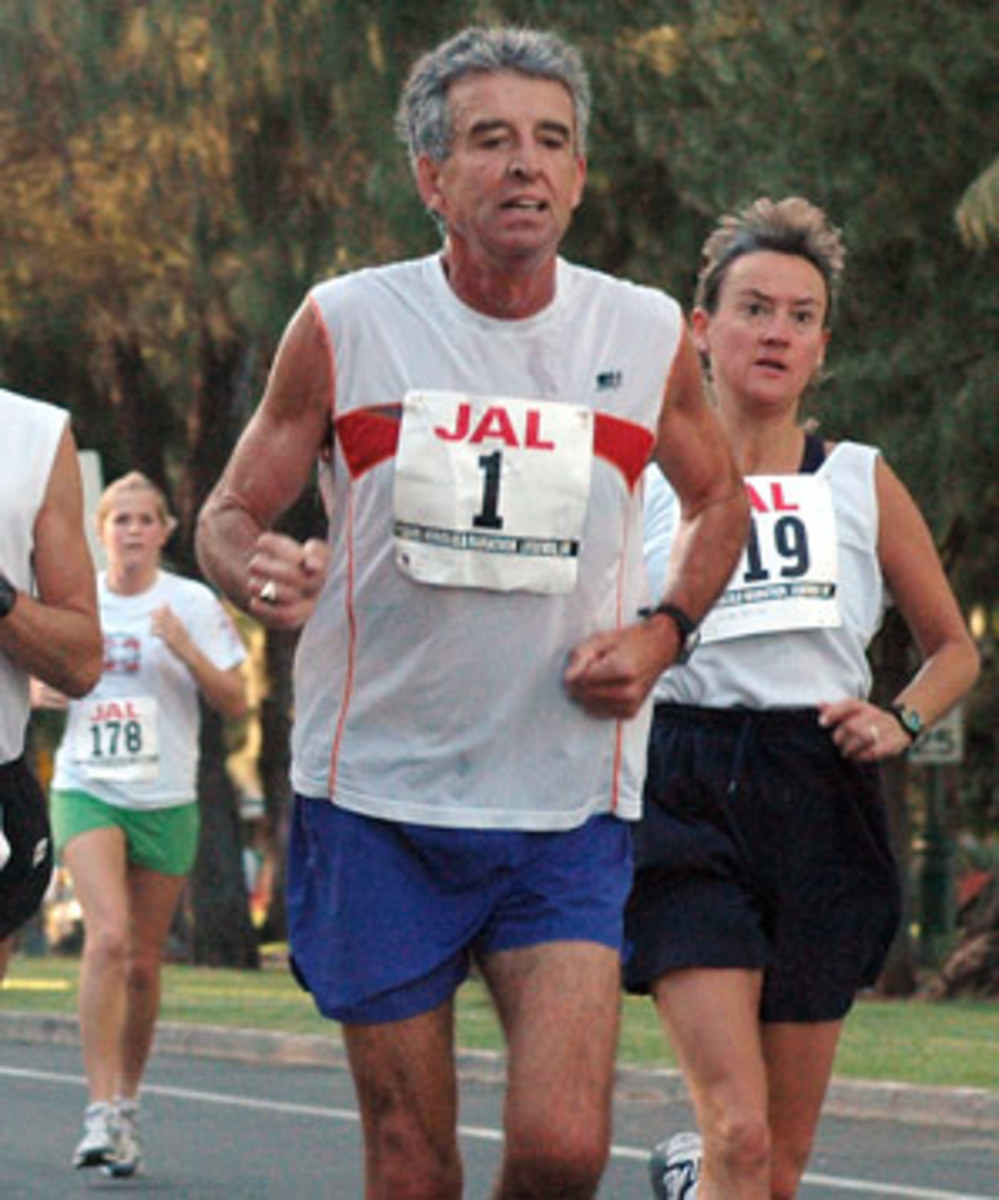Catching up with Frank Shorter
Is it any surprise that Frank Shorter, whose athletic feats -- most prominently gold in the 1972 Olympic marathon -- place him in the pantheon of American endurance athletes, is still doing essentially what he has been for more than three decades?
Still passionately telling anyone who will listen -- including Congress -- that drug-free track and field is not a pipe dream, and still training an hour-and-a-half every day.
"I'm about the same weight I was in my 20s," said Shorter, 60. "I don't run as much [he averaged 17 miles a day for the 1970s], but between bicycling, running and other cross-training, I'm enjoying doing what I've always done."
Shorter no longer runs intervals, and claims he doesn't race, though he happened to have fallen into three half-marathons earlier this year. Three or four years ago, however, the osteoarthritis in Shorter's knees got so bad that he could not sit through a Broadway play.
"I had to get up in the middle of the show," he says. "I almost passed out from the pain, and I can tolerate pain."
X-rays showed that the cartilage in both Shorter's knees had worn down. In his right knee, the cartilage was almost completely gone -- not because of all the miles he'd logged, Shorter's doctors told him, but because osteoarthritis runs in the Shorter gene pool. (People with arthritis are actually encouraged to exercise to keep their joints mobile).
What got Shorter back on the roads of Boulder -- he moved there in 1974 because it was the only U.S. city above 5,000 feet with an indoor track -- were injections of Hyalgan, the brand name of a compound that comes from rooster combs and restores the cartilage in the knee. (Shorter has since become a spokesman for Hyalgan.)
"My right knee still makes all sorts of noise," Shorter says. "It's ugly, but I don't have any pain."
In 2003, Shorter stepped down after three years as the chairman of the United States Anti-Doping Agency, a body he helped to found in 2000. Still, Shorter has continued as an advocate for drug-free sports, and he testified before Congress in the midst of the baseball hearings in '05. Shorter thinks Marion Jones' doping confession could be a turning point in public perception about drug use in track.
"Marion was a convincing liar," he said. "Now when I tell people how bad this had really become, they don't look at me like I'm overreacting." He is quick to add, though, that Jones indiscretions involve the '00 Olympics.
"After the 2000 Games is when the independent agencies, USADA and [the World Anti-Doping Agency] started to get involved," he said. "Things have changed, and now all international competition goes through independent testing. American [runners] can be tested any time of the year with no notice. We need to make sure every other country is doing that now."
Asked whether baseball can possibly come up with a successful anti-doping plan in the absence of independent testing, he replies, "The emperor has no clothes. You can't make money on something and police it."
Shorter still travels around the country promoting about 15-20 races a year, but considers himself "semi-retired." His most resonant legacy with the current crop of young runners is not his marathon win -- the last gold by an American -- but the presence of his character in two movies about his former training partner, distance-running star Steve Prefontaine. (Shorter helped write both scripts.)
"The unexpected result has been that Steve has become a sort of James Dean icon among young runners," Shorter says. "I can always tell when I see a high school kid come up to me and they have this look in the eye like, 'Should I ask him?' So I say, 'It's about Pre, isn't it?' and it breaks the ice. They want to know someone who knew him."






